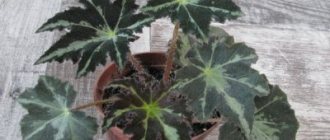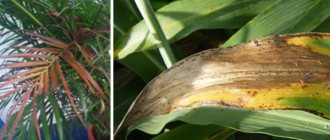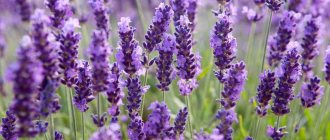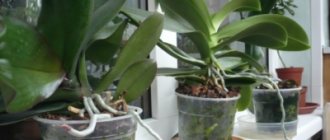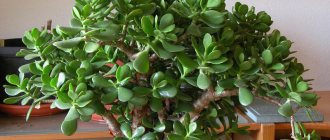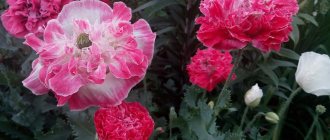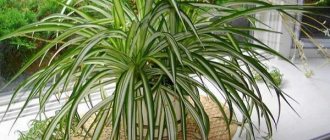Botanical description
Botanically, the piketail flower, Sansevieria is in the same family as the asparagus plants. Externally, these are evergreen leaves that grow straight from the ground without a stem.
Natural habitat - Africa. All types are conditionally divided into 2 large groups:
- Tall - with long lanceolate leaves reaching a height of 2 m.
- Low-growing , growing in the form of a rosette.
Sansevieria has thick, erect leaves of a single or variegated color. Their surface is covered with a leathery film, the average growth rate is 3 or 4 leaves per year.
With proper care, piketail can bloom, producing white buds on a long peduncle in the spring. They give off a sweetish vanilla aroma, and you can only observe the rosette blooming once.
How many names does he have?
Let's start, perhaps, with the official language of almost all terms - Latin. Sansevieria (sansevieria) - this is exactly what the name of this representative of the decorative fauna actually sounds like. The flower was named in honor of the philanthropist and botany lover, the Italian aristocrat Raimondo de Sangro, Prince von Sansevierio, who lived in the 18th century.
Pike tail is the name given to this plant by people who saw a pattern in the stripes on the leaves of one of the species that was similar to the color of a river predator. Another bright epithet that has taken root among us is mother-in-law’s tongue. Most likely, a parallel should be drawn here with the long tongue of the heroine of such popular jokes among us. It is difficult to find any other reason for the appearance of such a name, other than the ineradicable sense of humor of the Russian people.
However, in the search for interesting names that at least somewhat accurately characterize sansevieria, our people are not at all original. The Germans call this plant African hemp, the British - the tongue of the devil, or leopard lily, the Americans - snake skin, which indicates the popularity of the species in different countries.
Types of Sansevieria
In addition to its unpretentiousness, pike tail is attractive due to its wide variety of varieties . They differ in leaf height, stripes and color contrast. The most popular types (names and photos) are described in detail below to make choosing a pet as simple as possible.
Sansevieria Trifasciata
Three-lane Sansevieria is also known as Laurenti. This is a rosette-shaped variety of pike tail. The shape of the leaves resembles a sword (up to 1 m in height), and their main advantage is their color: a dark green base tone with transverse whitish stripes, and a yellow-light green border along the edges. The white-green buds are collected in a cluster and emit a strong scent.
Sansevieria hanni
A low-growing variety that grows only 30 cm. The shape of the rosette resembles a vase consisting of dark green leaves. Several varieties have been developed that differ in color:
- Hunny Golden with longitudinal stripes of white and golden color.
- Hunny Silver is gray in color with dark green transverse stripes throughout the leaf and along the edge.
- Hanny Krista purifies the air better than other varieties. Its solid green leaves curl slightly toward the center.
Sansevieria cylindrica
Cylindrical Sansevieria differs from other varieties in the shape of its leaves - thick, smooth tubes, pointed at the top. Their main tone is dark green, along the entire length the transverse stripes are several shades lighter. The buds are collected in an inflorescence that resembles a brush.
Sansevieria zeilanica
The sword-shaped long leaves grow vertically to a height of up to a meter. The edges are slightly uneven, with light green speckles scattered across the emerald surface. Zeylanika requires virtually no care, adapting to any conditions.
Sansevieria Futura Superba
A variety of sansevieria with lanceolate leaves no more than half a meter high. Up to 12 leaf plates are formed in one rosette. Along their edges there is a yellow edging.
The yellow color around the edges is very sensitive to environmental changes and quickly disappears with lack of care.
Home care
Even a child can choose such an unpretentious indoor plant as Sansevieria.
Lighting
Good lighting is important only for variegated varieties of mother-in-law's tongue. It is recommended to place them on a southwestern or eastern window, where the color will appear especially brightly.
If there is no suitable place, then you can safely grow plain varieties in the back of the room or on a north window .
It is recommended to move them closer to the light for at least 1–2 months a year or take them outside in the summer. During this time, a pair of new leaves are formed, which grow under the same conditions.
Temperature
Sansevieria adapts to a fairly wide range of temperatures - to
25 ° C. In summer, at higher temperatures, the pike tail will easily tolerate the heat and will not require additional attention. Important! In winter, the temperature should not be allowed to drop to 10 ° C, which will lead to frostbite of the roots and their rotting.
The pike tail is able to develop at a constant temperature all year round . You will only need to create special conditions for wintering if you want to see Sansevieria bloom. For this purpose, the temperature is reduced to 15 °C for 1 month.
How to water a pike tail
Mother-in-law's tongue gets along well with those who often forget to water the flowers. The hard leaves of Sansevieria just like it - even in summer you should not water the plant more than once a week .
In winter, you can moisten the soil only once a month, thereby reducing the ambient temperature.
Watering too frequently can cause rotting of the root system and the death of your pet. It is recommended to focus on the soil: it must dry completely to its entire depth.
Important! When watering, be sure to ensure that water does not get into the center of the outlet. Moisture will very quickly cause the leaves to turn black and die.
Humidity
One of the many advantages of keeping pike tail is that you don’t need to spray the leaves . The procedure can even harm the sockets if moisture flows into their base. For hygienic purposes, you can only wipe the leaves with a damp cloth, removing dust from them.
How to replant sansevieria
Although pike tail grows slowly, you should know how to replant sansevieria at home. A wide pot is selected for replanting , since the roots of the flower grow more to the sides than to the depth. In this case, the material from which the container is made is not important - plastic and clay flowerpots are acceptable.
Advice! For tall sansevieria, it is better to choose a heavy ceramic pot that will not tip over from overgrown foliage.
It is better to prepare the soil yourself from equal parts of leaf soil, turf soil and sand. The finished composition should be loose and highly nutritious. Of the ready-made substrates, pike tail is suitable for soil for succulents or cacti.
Relocation to a new pot is carried out using the transfer method:
- Water the plant for better extraction.
- Fill the new pot one-third full with drainage, with a layer of soil on top.
- Turn the pike tail over, holding it by the base, and shake it out of the pot.
- Remove softened or broken roots and dust the damaged area with charcoal.
- Place the plant in the center of the new pot and cover it with soil.
Sansevieria fertilizer
The recently transplanted mother-in-law's tongue does not need fertilizer for a long time. Fertilizing can be applied when the flower has been kept in the same substrate for more than six months or begins to wither.
Advice! Add additives only during the active growth phase in good lighting conditions. In partial shade, without the formation of new leaves, nutrients will not be absorbed and will only lead to a chemical burn of the roots.
You should water the flower with fertilizer no more than once a month , and fertilizers for succulents are best suited for this.
Reproduction
There are 3 ways to propagate pike tail: by seeds, by leaves, and by dividing the rhizome.
Seeds
It is almost impossible to find Sansevieria seeds in the store; at least they are not produced on an industrial scale.
When a houseplant blooms, you can get planting material from it by waiting for the pods to ripen.
They must be collected and dried at room temperature, after which the small grains must be removed. Sow them in a container with wet sand and cover with film. For germination, the greenhouse is placed in a warm place with good lighting for several months.
Attention! For germination to be successful, the sand should not be allowed to dry out and the temperature should not be below 22 °C.
Leaf
You can grow a new plant from one leaf. To do this, its cut is processed by “Kornevin” and immersed in wet sand.
To increase humidity, the sheet is covered with film or a jar . It will take about 2 months for roots to form and other leaves to start growing.
A sprout with a rosette of 3 leaves can be transplanted into soil for adult flowers.
By dividing the rhizome
During the next transplant, the overgrown pike tail is not only possible, but also necessary to be divided. The rhizome is separated into rosettes and, if necessary, cut with a sharp knife.
This method is suitable for plants over 5 years old , otherwise underdeveloped rosettes will not be viable in separate pots.
Pike tail bloom
The ability of the pike tail to flower depends on compliance with the recommended care rules. The buds are not particularly beautiful, but they fill the room with a perfumery aroma with sweetish notes.
The corollas are collected in a brush on an elongated peduncle and bloom in the evenings . Flowers with narrow petals and long stamens are colored in the same color scheme as the leaves - beige-green.
It will be possible to observe flowering only after the plant has rested in a cool place and is relatively dry.
The flower perceives such conditions as extreme and soon begins to produce flowers to form seeds. Just a month is enough for a flower bud to form, after which the previous watering is resumed in the warmth.
Where is his homeland?
The tropics and subtropics are where the pike tail feels great and develops well. The homeland of the sansevier plant is the tropical regions of Africa, mostly its western regions. Modern researchers quite often discover new species of sansevieria in Uganda, Kenya and neighboring countries.
Today this plant is widespread in Sri Lanka and India, tropical Asia and the island of Madagascar, South Florida. As a rule, in nature, sansevieria grows in clumps, forming impenetrable thickets on river banks. It can coexist with both huge spreading baobabs and low acacias of various types and succulents. This flower can grow in any poor soil with low humidity - about 40%. That is why the pike tail tolerates conditions in which other indoor flowers cannot exist without problems.
Diseases and pests
Most often, keeping a pike tail does not cause difficulties. It is rare to encounter the following problems:
- Dark spots appear from lack of light.
- From excess moisture, a fungal infection . It appears as yellow-brown spots.
- Constant waterlogging of the soil leads to root rot , which threatens the complete death of the flower. The first signs may be yellowing of the edges of the leaves.
- Cold air causes the leaves to become limp.
- Variegated varieties of Sansevieria become pale in insufficiently lit areas.
- Not only the roots, but also the base of the rosette can rot due to water getting into them or keeping the flower in a cold room.
- When frostbite occurs, the leaves turn black and become soft.
Of the pests, whiteflies, mealybugs or thrips most often settle on mother-in-law's tongue.
- Whiteflies live both in the ground and on leaves. When you touch the plant, small white moths begin to fly.
- Thrips settle on the flower in colonies, especially on the lower surface of the leaves. They then turn brown.
- The mealybug begins to spread from the base of the leaves in the form of a sticky white coating. The pest feeds on the sap of the leaves, they curl, turn yellow and die.
To combat them, insecticides for indoor plants, such as Aktara, have proven themselves to be effective. The treatment is carried out not only on the leaves, but also on the ground: the substrate is watered with a solution of the drug. Another way is to replace the top 3 cm of soil after treatment.
Beneficial features
The perennial succulent is used in folk and traditional medicine. Along with aloe juice, they are successfully treated with sansevieria juice, as well as a decoction of the root and even the smell of the flower. The methods of using Sansevieria at home and in distant countries differ little.
External and internal use of the plant is justified for diseases such as:
- colds: drops of juice diluted with water help with runny nose and ear pain, expectorant;
- for the treatment of skin problems: burns, wounds, dermatitis, scabies, ulcerative inflammation;
- gynecology: inflammation of the appendages, cystitis;
- intestines: laxative effect;
- hypertension and headache:
- The smell of dry leaves stabilizes blood pressure and relieves headaches.
Sansevieria should be used for medicinal purposes with caution and only after consultation with a doctor.
The plant is also used in cosmetology.
“Pike tail” contains glycosides that are highly soluble in water and alcohol. Organic acids contain saponin, which means soap in Latin. It is included in cosmetics and detergents. Despite the fact that the homeland of indoor Sansevieria is hot countries, the flower has taken root well on the windowsills of Europe and the northern continents. A spectacular evergreen unpretentious plant can be grown at home and in office premises. Sansevieria not only decorates a room, but also fills it with positive energy.
Applications of Sansevieria
In its homeland, sansevieria is successfully used as a hedge. Its leaves contain valuable technical fiber, from which local residents used to make bow strings. Currently, in tropical countries, certain types of sansevieria are cultivated to produce this fiber. Sansevieria is also a medicinal plant. It is used to treat cystitis and inflammation of the appendages. With the help of this plant, you can increase resistance to viral and colds and enhance adaptive abilities.
Sansevieria has been grown in Europe as an ornamental plant since the 18th century, considered an unpretentious and hardy indoor plant that is suitable even for the novice gardener. In summer, Sansevieria graces man-made landscapes, as its showy leaves create the perfect backdrop for plants with small flowers or feathery leaves. This plant is used for landscaping winter gardens and creating compositional arrangements.
Sources
- https://vusadebke.com/cvetovodstvo/komnatnye-cvety-i-rasteniya/dekorativnolistnye/kak-vyglyadit-sansevera.html
- https://FB.ru/article/164327/otkuda-rodom-schuchiy-hvost-rodina-rasteniya-i-poleznyie-svoystva
- https://pion.guru/rasteniya/sansevera
- https://prorasteniya.com/komnatnye/sukkulenty/sansevera.html
- https://podokonnik.temadnya.com/1394154088869137311/sansevieriya-rodina-rasteniya/
[collapse]
